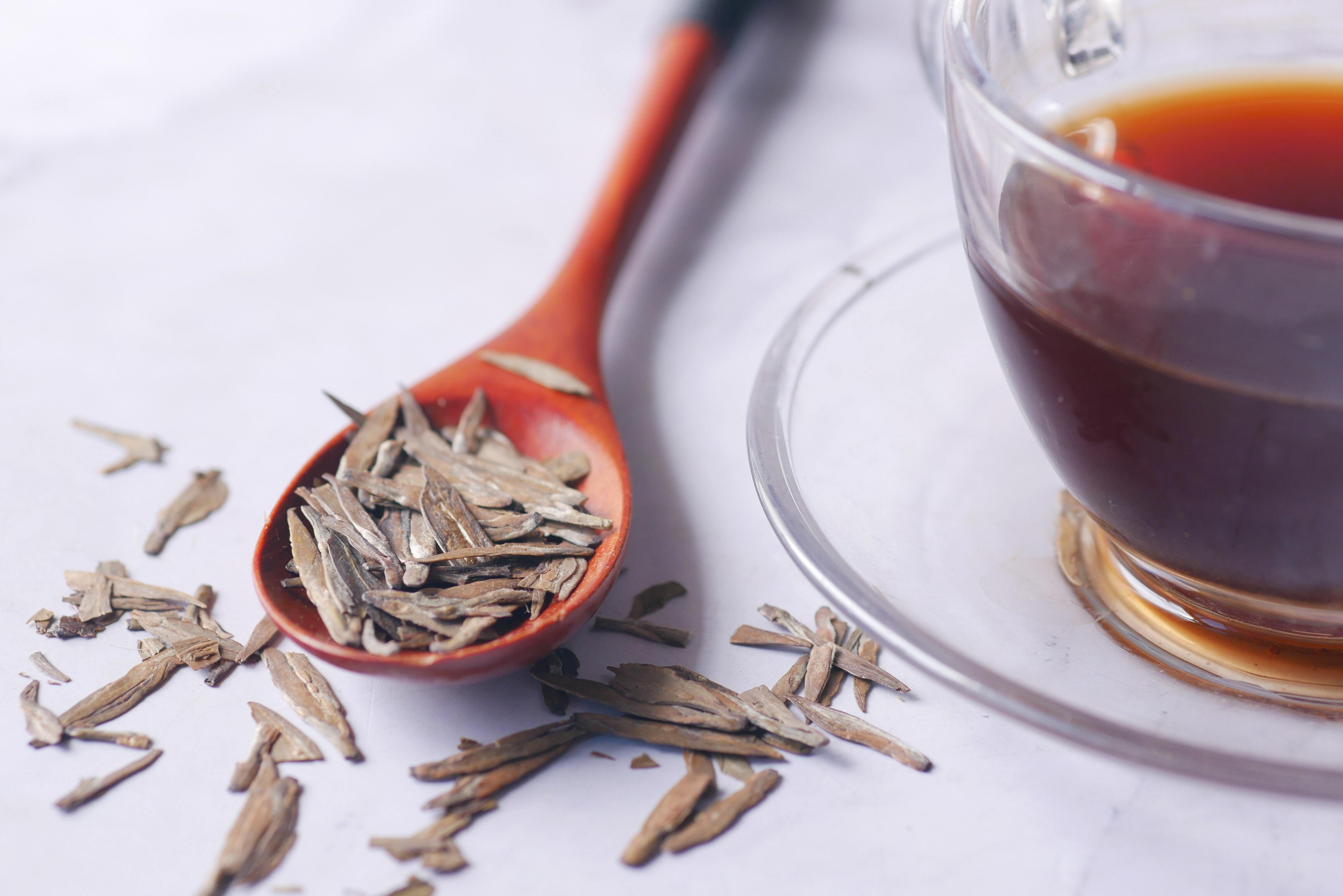What is Sage?
Sage or Salvia officinalis is part of the mint family and native to the region of the Mediterranean though it is now throughout the world. Sage has graying leaves, flowers that are blue to purplish, and woody stems. Sage has been used throughout history for medicinal and culinary purposes. In the modern era, it is a garden plant.
Common names for Sage are:
sage
common sage
garden sage
golden sage
kitchen sage
true sage
culinary sage
Dalmatian sage
broadleaf sage
Salvia, the genus name of sage is derived from the Latin word salvere which means to "heal" or to "save".
History of Sage
Dried sage is burned as a way to heal, protect, increase wisdom, and boost defense against disease (1). Sage has a long history in medicine use in Greek, Egyptian, and Roman as well as Native American medicine. during the Middle Ages, one can read sage in Charlemagne's inventory of herbs that were grown in his herb garden. Sage in Ancient Rome was used to soothe a sore throat, stop bleeding from wounds and heal ulcers. Immigrants from Europe brought sage to America.
Sage has been used in foods throughout history. sage has been considered an essential herb like parsley, rosemary, and thyme for generations in Britain. The taste of sage is slightly peppery in its flavor. Sage is used in fish dishes, saltimbocca in sage and onion stuffing, pork casserole, Lincolnshire sausage, and sage derby cheese. It is favored in Britain, European, Italian, Balkan, Middle Eastern, and American cuisine.
Benefits of Sage
Dose of vitamins and minerals.
One teaspoon of ground sage contains:
Calories 2
Protein 0.1 grams
Carbs 0.4 grams
Fat 0,1 grams
Vitamin K 10% reference daily intake RDI
Iron 1.1% RDI
Vitamin B6 1.1% RDI
Calcium 1% RDI
Manganese 1% RDI
Sage contains 10% of your daily vitamin K needs. It also contains small amounts of zinc, copper, and Vitamins A, C, and E (1).
Antioxidants:
One study found that drinking one cup (240 mL) of sage tea twice daily significantly increased antioxidant defenses. It also lowered both total cholesterol and "bad" LDL cholesterol as well as raised "good" HDL cholesterol (2).
Support Oral Health
In one study, a sage-based mouthwash was shown to effectively kill the streptococcus mutants bacteria, which is notorious for causing dental cavities (3). in a test tube study, a sage-based essential oil was shown to kill and halt the spread of Candida albicans, a fungus that may also cause cavities (4). Sage may also help with abscesses, infected gums, mouth ulcers, and throat infections.
May ease menopause symptoms
Sage has been used to reduce menopause symptoms like hot flashes, irritability, vaginal dryness, and excessive sweating. It is believed that compounds in sage have estrogen-like properties allowing them to bind to certain receptors in your brain to help improve memory and treat hot flashes and excessive sweating (5).
May support memory and brain health
Sage appears to halt the breakdown of the chemical messenger acetylcholine (ACH), which has a role in memory. ACH levels appear to fall in Alzheimer's disease. Sage appears to improve memory and brain functions (6)
May alleviate diarrhea
Fresh sage is a traditional remedy for diarrhea. It contains some compounds that help to relax your gut.
May support bone health
Vitamin K, which sage offers in large amounts plays a role in bone health. A deficiency in this vitamin is linked to bone thinning and fractures (7).
May combat aging
Compounds in sage may help fight the sign of aging such as wrinkles.
Fresh sage is better if you use it sparingly. You can use fresh sage in your diet by:
-using it as a garnish on soups
-mix it into stuffing
-make sage butter
-add it to tomato soup
-eat it in an omelet
Cooks prefer to use dried sage but it comes in ground, rubbed, or in whole leaves. You can use dried sage as a rub for meats, to season roasted vegetables, or add to mashed potatoes or squash. You can also buy sage tea and sage extract supplements.
Sage Tea
Boil water. Add 2 sprigs of fresh sage leaves. Fill a coffee cup with boiling hot water. Let steep for 5 minutes. Add sweetener, which is optional.
or
1 tablespoon of fresh sage leaves or 1 teaspoon of dried sage
1 cup of water
Bring water to a boil. Remove from heat and put sage in water. Steep for 3 to 5 minutes. Strain, and pour into the cup. Drink it hot or cold. Enjoy.
Sage Mouthwash
Sage Mouthwash
2 tablespoons of fresh sage or 1 tablespoon of dried sage
water
Add sage to boiling water. Simmer for 10 minutes and then strain the mixture and leave to cool.
or
8 fresh sage leaves
1 teaspoon of salt
5 ounces of water
Place sage leaves in a heat-resistant glass bottle. In a cup, mix boiling water and salt until it dissolves. Pour the salt and water mixture over the sage leaves. Shake the bottle. Use as needed.
Use the mouthwash after brushing your teeth at least 2 times a day.
Uses for Sage
Sage may be useful in preventing or treating the following conditions:
-cold sore
-fatigue
-high cholesterol
-hot flashes
-memory problems
-sore throat
-sunburn
-cancer
-digestive issues
-loss of appetite
-gas (flatulence)
-stomach pain (gastritis)
-diarrhea
-bloating
-heartburn
-depression
-Alzheimers
-overproduction of salvia and perspiration
Doses
By mouth:
For treating Alzheimer's disease, 1 gram of sage per day. A dose of sage extract gradually increased over time to 2.5 mg 3 times a day has also been used.
Applied to skin:
For treatment of herpes labialis (cold sore): a cream containing 23 mg/grams each of sage extract and rhubarb extract has been applied every 2 to 4 hours while awake with treatment starting within 1 day of the first symptoms and continuing 10 to 14 days.
Side Effects
There are no known side effects from taking sage. But drinking too much sage tea or ingesting sage essential oils may have toxic effects. To be on the safe side, just drink 3-6 cups of sage tea a day (8). Sage is safe to eat with no effects.
Precautions
Avoid sage if you are pregnant or breastfeeding. Avoid if you have seizure disorders, diabetes, breast cancer, uterine cancer, ovarian cancer, endometriosis or uterine fibroids, and high and low blood pressure. Don't take common sage as a medicine at least two weeks before a scheduled surgery. Common sage may interfere with blood sugar control during and after surgery (8).
Sage may be unsafe if taken by mouth in high doses for a long time. Some species of sage such as common sage (Salvia officinalis) contain a chemical called thujone. Thujone can be poisonous if you get enough and can cause seizures and damage the liver and nervous system (9),
Sage may interfere with some medications. Ask your doctor before taking sage as a medicine.
Taking 12 or more drops of sage oil is considered to be a toxic dose (10). Sage is approved by the FDA as a spice or seasoning.
Sources
1. healthline.com/sage
2. healthline.com/sage
3. healthline.com/sage
4. healthline.com/sage
5. healthline.com/sage
6. healthline.com/sage
7. healthline.com/sage
8. rxlist.com/sage
9. rxlist.com/sage
10. verywellmind.com/sage
This content is accurate and true to the best of the author’s knowledge and does not substitute for diagnosis, prognosis, treatment, prescription, and/or dietary advice from a licensed health professional. Drugs, supplements, and natural remedies may have dangerous side effects. If pregnant or nursing, consult with a qualified provider on an individual basis. Seek immediate help if you are experiencing a medical emergency.

